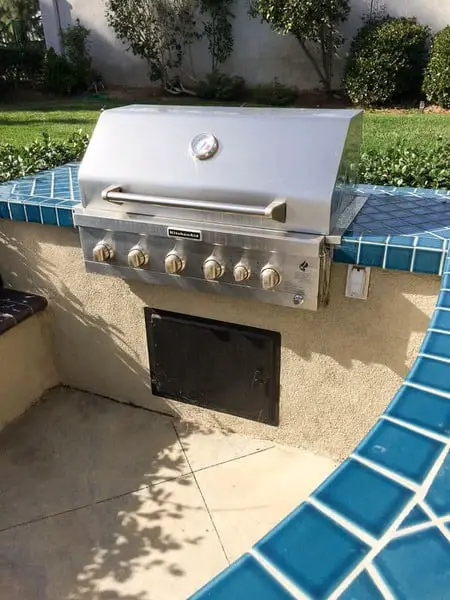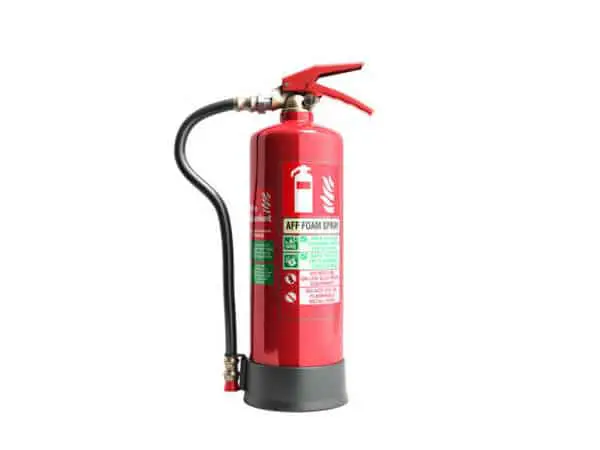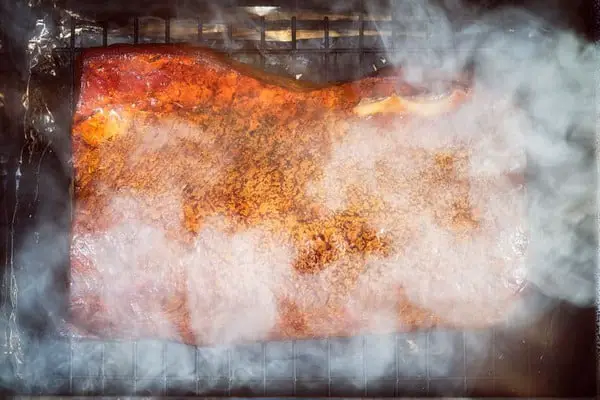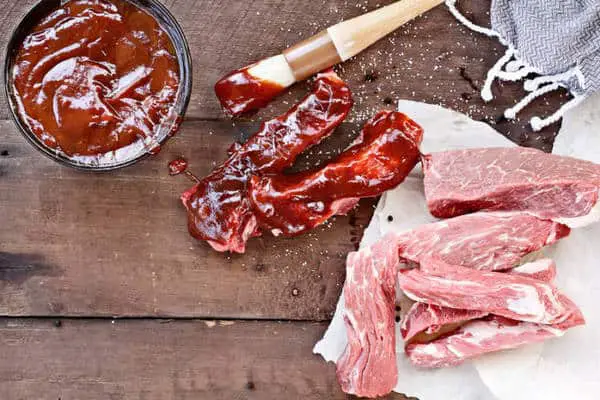
Having a natural gas grill in your yard is a huge flex. With a natural gas grill, you will never run out of fuel for your outdoor family barbeques. On top of that, natural gas is more environmentally friendly than propane gas, or even charcoal. Even then, mounted natural gas grills can be quite an eyesore especially if they are old, falling apart, and not in use. Not to mention, if you have little ones running around the yard, you may have safety concerns over an unused natural gas grill.
In such situations, removing the natural gas grill from your yard may be the best option. What’s more, it will create much needed space in the yard. So comes the big question, how do you go about removing your natural gas grill from your yard?
Removing Your Natural Gas Grill
Generally, outdoor natural gas grills come in two types: portable grills and in-ground or post mounted grills.
Most portable natural gas grills come with a set of wheels which makes them easy to move around the yard. However, portable natural gas grills do not come with portable gas tanks such as those found on portable propane gas grills. As a result, repositioning them in the yard may be more difficult especially of the natural gas line is not flexible.
On the other hand, mounted natural gas grills have more permanency since they are fitted onto a pole or into the ground. Nonetheless, it is still possible to remove mounted natural gas grills from the yard, albeit with a little more effort than that required with the wheeled grills.
Whether you have a portable or a mounted natural gas grill, the most important thing to remember is to shut off the gas supply. After confirming that the gas supply is off, the next step is to unscrew and disconnect the gas pipe from the grill. Once you have completed these two steps, you are free to remove your natural gas grill from the yard.
However!
While the process of removing your natural gas grill from the yard sounds simple, it does require a lot of caution. Remember, any work involving gas comes is potentially dangerous. After all, natural gas is highly combustible and the last thing you want to do is blow yourself up.
Fortunately, there are a number of guidelines you can follow to enhance your safety while removing your natural gas grill from the yard.

Safety Procedures to Follow when Removing Your Natural Gas Grill from the Yard
Check, Check and Check Again
The first step to take when removing a natural gas grill from your yard is to shut down the gas supply. This step is also the most important and, at the same time, one of the most dangerous.
More often than not, cutting off the gas supply is as simple as closing the valve which feeds into the port that is connected to the grill. Normally, this means turning the valve in a clockwise direction. Cutting the gas supply allows you to safely disconnect the gas line from the grill without letting off natural gas into the air.
If your natural gas grill is still in working condition, try lighting the grill to confirm if gas is still flowing into the grill.
If your grill is damaged, then the next step is to start unscrewing the gas pipe from the grill. Once you have started unscrewing the pipe, you may notice the smell of residual gas. This is a normal occurrence and you should give the residual some time to dilute in the air.
In contrast, if you notice that the gas from the pipe is pressurized, retighten the pipe into the grill immediately. Pressurized gas may indicate that you turned the wrong valve or that the valve is faulty.
An even safer step to take is to perform a gas leak test before disconnecting the pipe from the grill. To this end, there are a number of guidelines to follow:
- First, prepare a soapy solution using one water and detergent
- Secondly, apply the solution gently at the point where the pipe connects into the grill
- Thirdly, check for bubbles around the area of connection. A flow of bubbles is indicative of a gas leak.
If you detect a gas leak, try closing the gas valve again.
If the gas leak continues, contact a plumber or service person from your gas utility company.
Do not use a flame or match to check for leaks.
If you are completely sure that you have cut off the gas supply and that there are no leaks, proceed with completely disconnecting the gas line from the grill.
Plug Up the Open Gas Line
Even if you have cut off the gas supply from the line that was feeding into the grill, it is never a good idea to leave gas lines open. Instead, it is advisable to plug up and properly seal the open line. The best way to do this is to screw in a Teflon reinforced cap into the open end of the pipe.
According to experts, it is always safer to use a cap that is made out of the same material as the pipe. Therefore, if the pipe is brass, use a brass cap and if it is made of corrugate steel, use a corrugated steel cap.
Apart from that, it is also advisable not to close the cap too tight as it may crack. Capping off the line is important as it will keep out insects, water, and other potentially dangerous substances from getting in. Furthermore, capping the line will keep away gas leaks in the event someone turns on the gas supply valve in the future.

Have a fire extinguisher nearby
Working with gas is always a potentially hazardous activity. Natural gas is flammable and can easily burn when mixed with air. To be on the safer side, keep a fire extinguisher nearby. Having a fire extinguisher nearby will also improve your response time in case a fire breaks out while in the process of shutting and disconnecting the gas line from the grill.
Keep the kids away
Although natural has is non-poisonous, it is combustible and, therefore, hazardous. If you have children or even pets, make sure they are a safe distance away. Having children or pets around while you are trying to remove your natural gas grill can lead to lapses in concentration which can lead to unwanted safety incidents.
Seek Professional help
In the event that you feel uncomfortable or incapable of removing your natural gas grill from the yard as a DIY project, seek professional help. You may seek the services of a professional plumber or even a service person from your gas utility company. Remember, it is better to pay for quality, professional service than to put yourself and your family at risk.
Disposing Of Your Natural Gas Grill
Getting rid of a grill is not as easy as tossing it out on the curbside like you would for old furniture. Even taking dropping it off at your local junkyard may pose a danger for junk collectors and yard workers.
For easier disposal, experts recommend completely dismantling the grill. Once dismantled, you can recycle some of the metal and plastic parts as scrap. For example, the bodies of most natural gas grills are made of materials such as aluminum, stainless steel and brass. You can recycle all of these and sell them off as scrap to scrap metal dealers. Other parts that you could recycle include:
- The plastic on the grill lid, if it has a recycle logo
- Plastic side shelves that have a recycle logo
- Gas valves
- Black plastic control knobs
- Plastic wheels
- However, it is advisable to dispose of parts such as:
- Metal plated control knobs
- Caster wheels
- The gas hose
- Plastic parts that do not have a recycle logo
If you are not sure of which parts to recycle and which parts to dispose of, consider contracting the services of a professional waste handling company.
Winterizing Your Outdoor Natural Gas Grill
You have probably heard that leaving your grill outside during winter may damage it. In fact, most people recommend storing a grill indoors during winter. Unfortunately, this advice is not feasible for mounted natural gas grills. Instead of removing your natural gas grill from the yard during winter, consider winterizing it.
Winterization is a process that seeks to prepare something to withstand cold weather conditions such as those experienced in winter.
Adhere to the following guidelines to ensure that your natural gas grill is ready for winter:
Light it up one more time
The first step to take in the winterization process is to fire up your grill and run it on high heat for at least 15 minutes while the lid is closed. This step ensures that any organic residue in the grill completely burns up. Additionally, this procedure helps to loosen any food debris or grease stuck in the grill hence making cleaning much easier.
Turn off and Disconnect the gas line
Next, you need to completely turn off the grill and let it cool before cleaning. This is also the time to disconnect the gas line from the grill. A key thing to remember at this stage is to make sure that the gas valve is completely closed before disconnecting the pipe from the grill. Also remember to cap off the gas pipe so as to keep away insects and elements such as snow. To be on the safer side, do not forget to perform a gas leak test after capping the gas line.

Clean the grill
Thoroughly cleaning the grill is one of the most critical steps in the winterization process. Not cleaning the grill makes it an easy target for pests such as rats. For thorough cleaning, follow the tips below:
Dismantle the grill for easier cleaning
Use a grill brush to scrape off any debris from the grill grids
Wipe down the grids using soapy water solution
Use a soapy solution and hot water to clean the external parts of the grill including the handles, control knobs and top of the grill lid.
Thoroughly clean the burners ensuring no grease or food debris is left.
Use a utility vacuum to suck out any residual ash or debris
Thoroughly clean the inside of the grill lid with a soapy solution and hot water
Empty and clean the grill’s drip tray
Some experts also recommend using a cleaning solution made of one part vinegar, one part water and one part baking soda.
After cleaning, allow the grill and its component parts to dry well before reassembling it.
Inspect the grill
While the grill is still disassembled, it is advisable to inspect all the parts and check for any damages. According to experts, extreme weather conditions can worsen already existing problems such as cracks, rust or even natural deterioration. Therefore, it is advisable to identify and repair any such problems before winter kicks in. In some cases, you may need to replace some of the damaged parts.
Oil the inner metallic
One of the biggest problems that grill owners experience during winter is the build-up of rust in the grill. As a remedy, it is advisable to oil all the inner metallic parts of your natural gas grill with vegetable oil. Oiling the internal metallic parts of the grill creates a protective layer that keeps way water as well as moisture from the air. In the end, the oil keeps away rust ensuring that all the inner parts remain undamaged.
Nonetheless, remember to clean the metal parts carefully and let them dry completely before oiling them.
Use a grill cover
Since your mounted natural gas grill will stay outside all through winter, it is important to protect its exteriors from the harsh weather. The most effective way to protect your grill is to use a high quality grill cover made that is moisture-resistant. A grill cover will protect your outdoor natural gas grill from the elements and also keep away pests and other animals looking for shelter from the winter weather. Nonetheless, do not cover the grill completely. Instead, leave some space to ensure that moisture does not get trapped in the cover.




